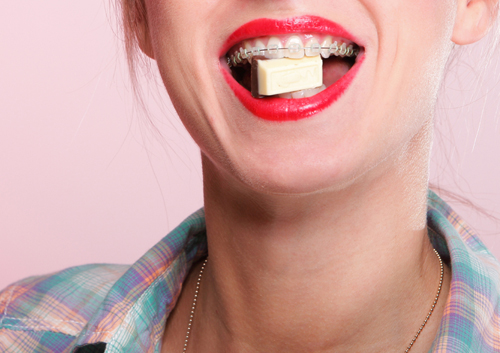Damon Smile®
August 25th, 2021

Damon Smile braces are passive, self-ligating braces, which means they don’t need elastic o-rings to keep the wires in their desired position. This system uses small sliding doors to allow the wires to slide freely through their slots instead of the o-rings used by traditional braces.
Stops on the wires prevent them from moving out of position over time. The absence of o-rings in Damon Smile braces also allows you to maintain better oral hygiene, since o-rings can trap bacteria. These braces are suitable for both adults and children.
Construction
The first set of wires in Damon Smile braces are composed of a metal alloy that contains copper, nickel, and titanium, commonly abbreviated as CuNiTi. These wires have a curve that’s wider than your natural arch, and that allows them to apply the necessary pressure against your teeth. The wires are very thin, beginning with a diameter of 0.014 inches.
Dr. Sung Lee will replace this initial set of wires with a series of successively larger ones as your teeth move into their desired alignment. Your teeth will be ready for the next set of wires when Dr. Sung Lee can passively place them into their brackets. Heavier wire may be composed of other materials such as a titanium molybdenum alloy (TMA) or stainless steel.
Cost
Dr. Sung Lee and our team will determine the cost of your braces, depending on a variety of factors such as the difficulty of your case and the length of time required for treatment. Another factor that can influence the cost of Damon Smile braces is your insurance coverage. Dental insurance plans often cover orthodontic treatments such as Damon Smile braces, so you’ll need to check with your insurance provider.
Sung Lee Orthodontics also offers a variety of payment plans, so be sure to ask our Puyallup, WA team about making your orthodontic treatment with Damon Smile affordable.
Adults
Adults often use Damon Smile braces to obtain a more youthful appearance in addition to correcting specific malocclusions. The cosmetic benefits of these braces include:
- Straighter teeth
- Improved facial balance
- Smoother cheek contours
Many patients with Damon Smile braces begin to see results after about ten weeks.
If you’re interested in Damon Smile braces, please contact Sung Lee Orthodontics and schedule an appointment!



